Quercus robur (English Oak)
Michael's Opinion
This slow growing tree can survive for centuries. The largest English Oaks have decayed centres but are estimated at 1000 to 2000 years old.
Botanical Information
| Family | Fagaceae |
| Genus | Quercus |
| Species | robur |
| Category | Woody |
| Type | Tree (deciduous) |
| Origin | Europe, Northern Africa and Western Asia. |
| Pronunciation |
Details
| USDA Hardiness Zone | 5 - 8 |
| USDA Hardiness Ref. | |
| Canadian Hardiness Zone | 4a - 8a |
| Canada Hardiness Ref. | |
| RHS Hardiness Zone | H7 - H4 |
| RHS Hardiness Ref. | |
| Temperature (°C) | (-26) - (-7) |
| Temperature (°F) | (-15) - 20 |
| Height | 12-23 m |
| Spread | 12-23 m |
| Growth | Slow |
| Flowering Period | April |
Description and Growing Information
| General Description | Large heavy branches, with a majestically domed crown and foliage set in bunches. This species has been placed on the IUCN Red List as least concern. |
| ID Characteristic | Distinctly large reddish acorns, and extremely short petioles. Undulate or wavy leaf edges. |
| Shape | Broadly rounded crown. |
| Landscape | In parts of Europe, it is planted along the axis and borders of public plazas, to provide shade and cool the air. However it is quite suited to North American landscapes as a ‘centre piece’ or focal point within a landscape venue especially when the tree has grown significantly enough to make an impact. |
| Propagation | Commonly through seed, although the seed is recalcitrant (will not store). |
| Cultivation | Quercus robur is tolerant to a variety of soils, even heavy wet clays. However it prefers to grow out in the open or in a hedgerow. It responds well to bur lapping and containers in production, however one must note that it has deep tap roots. |
| Pests | Erysiphe alphitoides (Powdery mildew). Although powdery mildew is unattractive, it is rarely fatal to the oak, however it does put stress on the tree, and can interfere with photosynthesis and transpiration. |
| Notable Specimens | University of Western Ontario, Sherwood Fox Arboretum, London, Ontario, Canada. Westonbirt, The National Arboretum, Tetbury, Gloucestershire, England. Lanhydrock Gardens, England, Cornwall. One of the oldest trees in Europe is the Allerton Oak at Calderstones Park in Liverpool, England. It was mentioned in the Doomsday Book and is estimated to be over 1000 years old. |
| Habitat | Climax forests in England and Europe. |
| Bark/Stem Description | Ash-coloured, coarsely textured with black fissures and vertical ridges. |
| Flower/Leaf Bud Description | The terminal buds are rather large, measuring 1 cm in length, being a reddish brown colour. The bud scales themselves are somewhat fringed with hairs, when mature, they develop shallow grooves. |
| Leaf Description | Small undulate leaves, measuring 8-13 cm in length, with 5 to 7 pairs of subtly rounded lobes, as well as small earlike lobes at the base of the leaf. |
| Flower Description | Small, delicate, white and inflorescent in nature. They are arranged on the sides of thin dangling stems 4 cm long. The female flowers are solitary. |
| Fruit Description | The acorns of Quercus robur are approximately 2.5 cm in length, and are a third covered by a cap. They are suspended by a long (10 cm) peduncle and can be found in clusters of three to five. |
| Colour Description | Jade green on the upper surface with subtle hues of pastel green underneath. In the autumn the leaves turn a rich tan colour. |
| Texture Description | Relatively thin as far as leaves are concerned. The upper-epidermis feels like soft leather, the lower surface has a ‘cotton paper’ like feel. |
Photographs
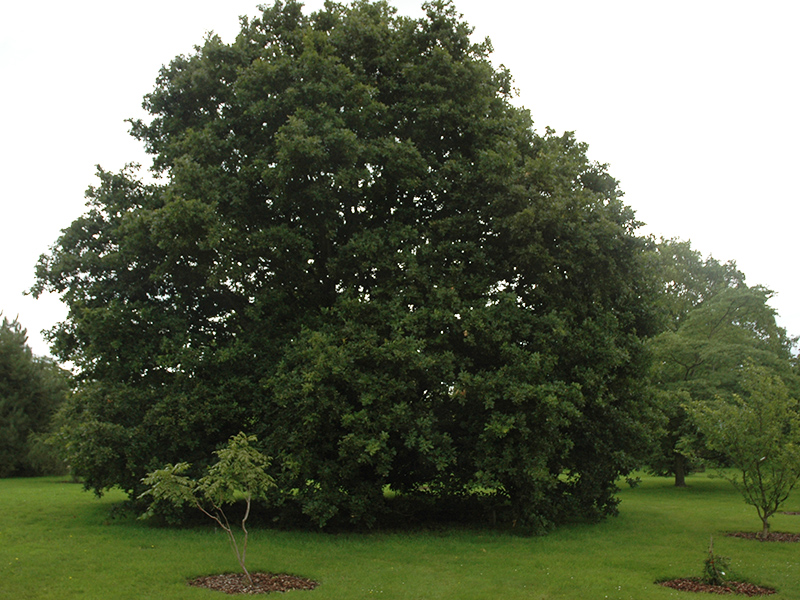
Quercus robur, form. Wakehurst Place, Ardingly, West Sussex, England.
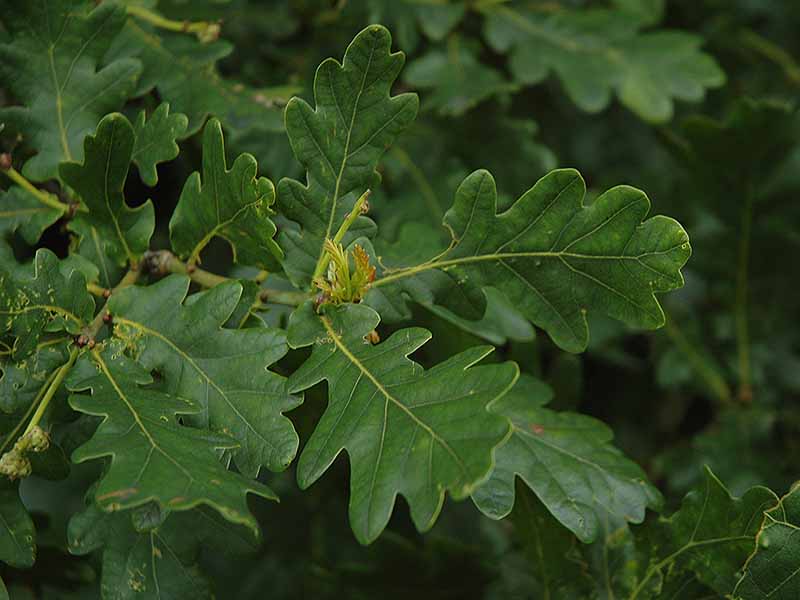
Quercus robur, leaf.
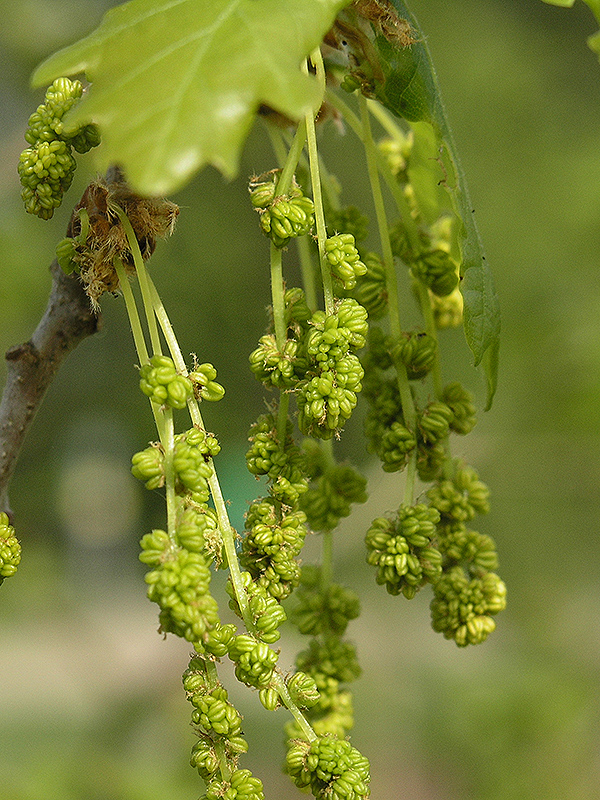
Quercus robur, flower.
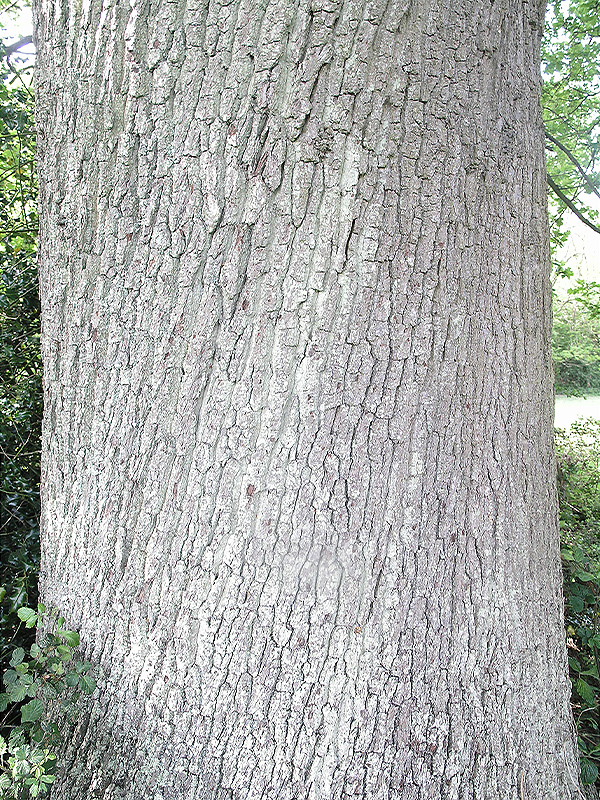
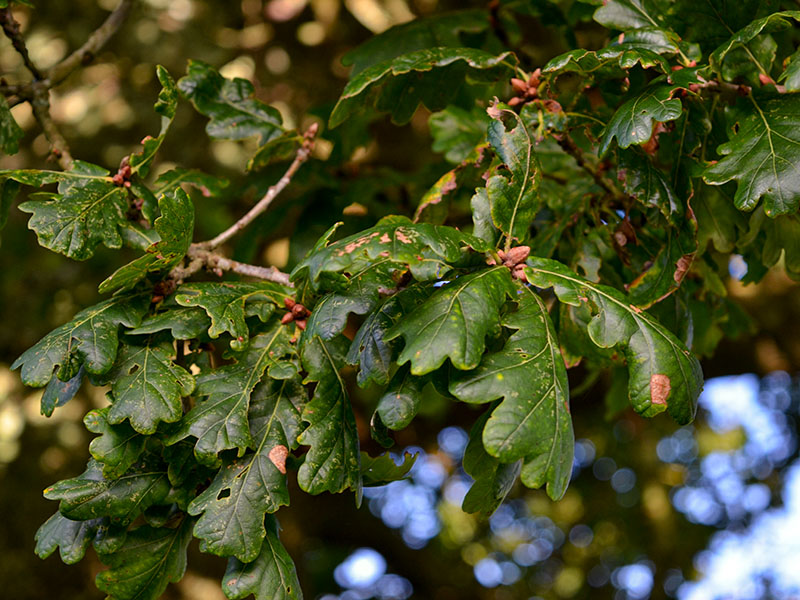
Quercus robur, leaf. Lanhydrock Gardens, England, Cornwall. 16/10/2019.
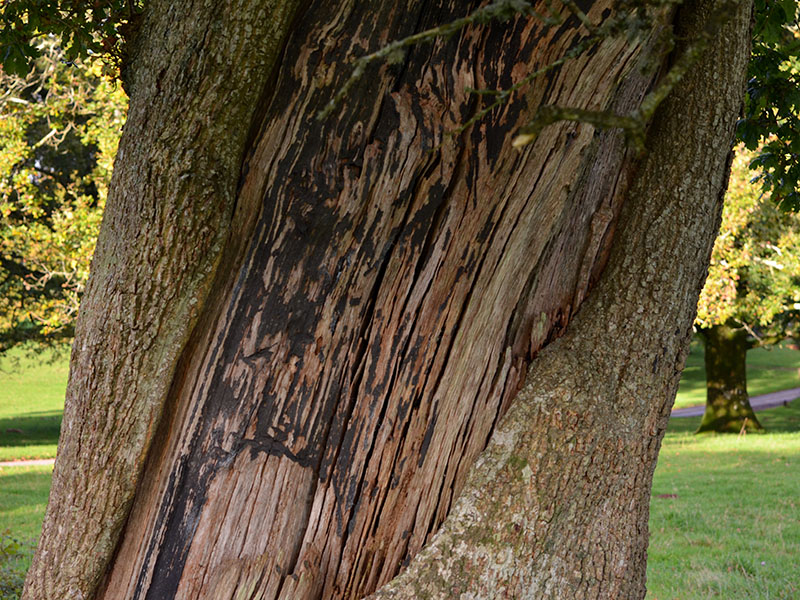
Quercus robur, bark. Lanhydrock Gardens, England, Cornwall. 16/10/2019.
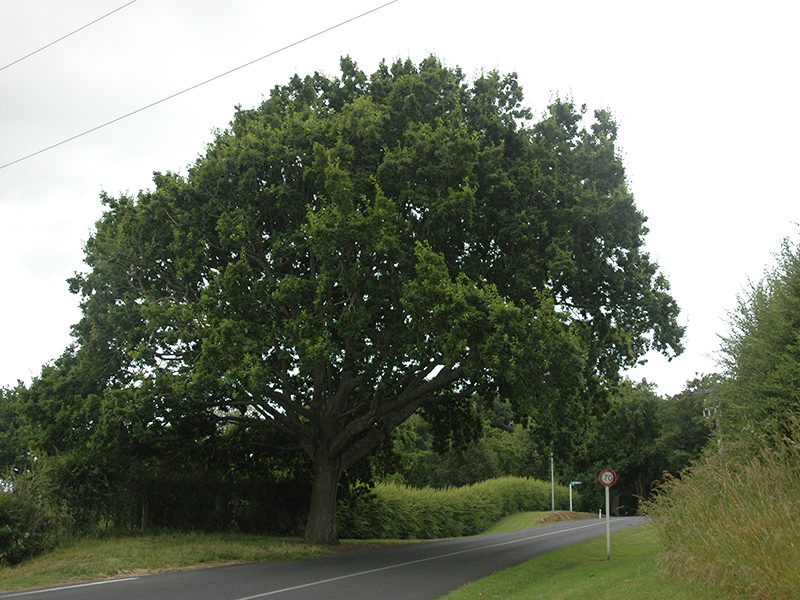
Quercus robur, form.
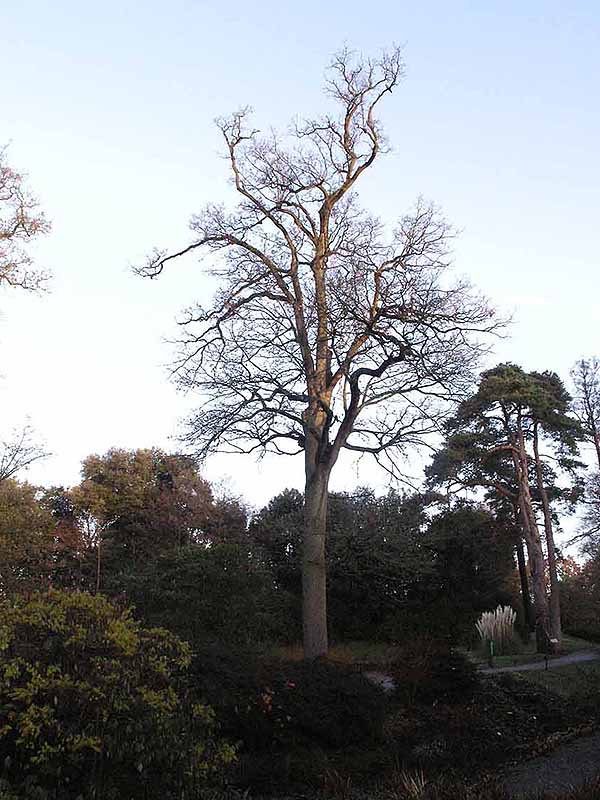
Winter profile showing its massive form, Wakehurst Garden, Sussex, England.
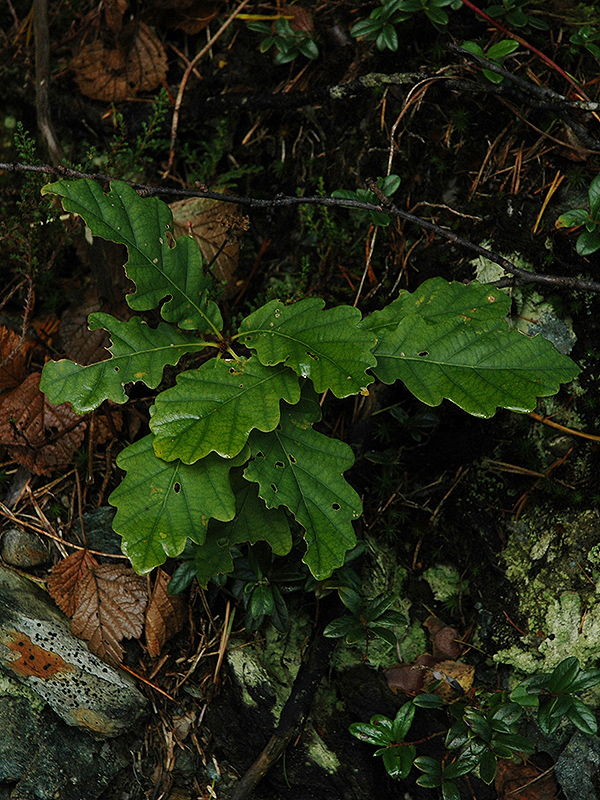
A seedling growing in southern Norway.
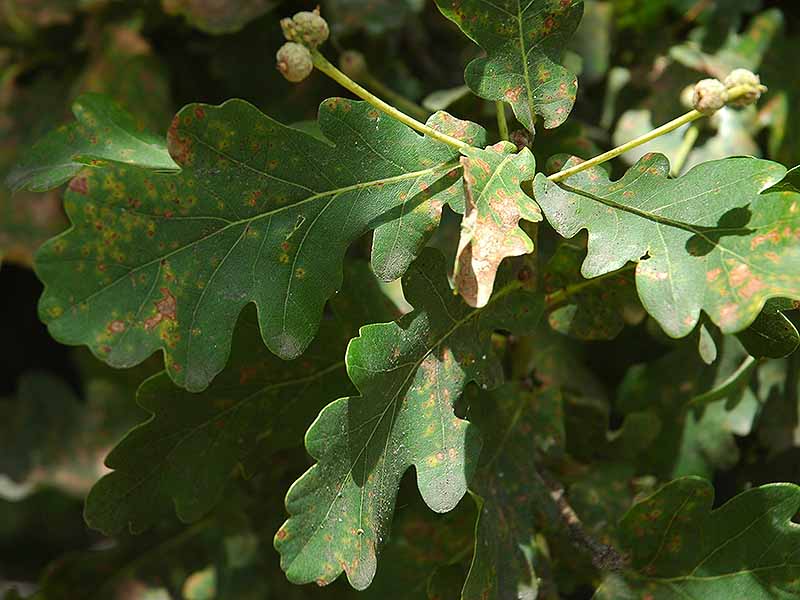
Powdery mildew on English Oak in late spring.
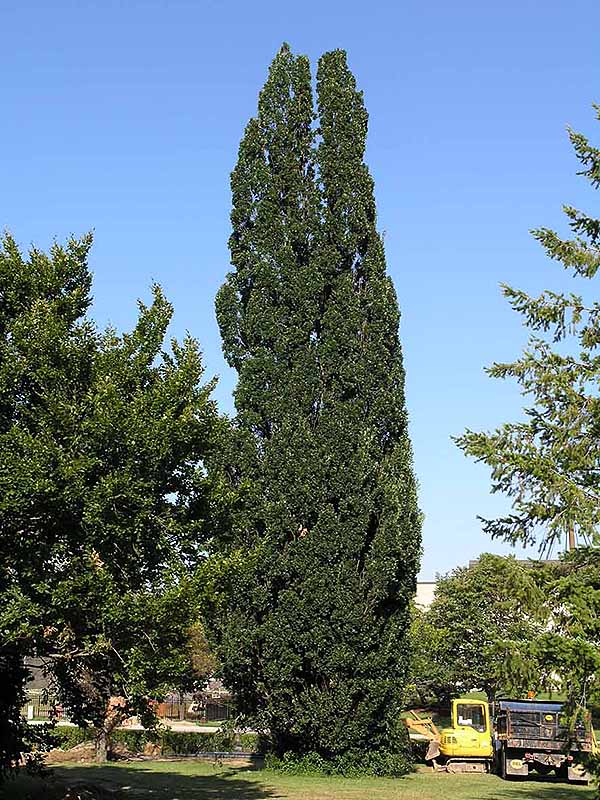
Quercus robur 'Fastigiata'
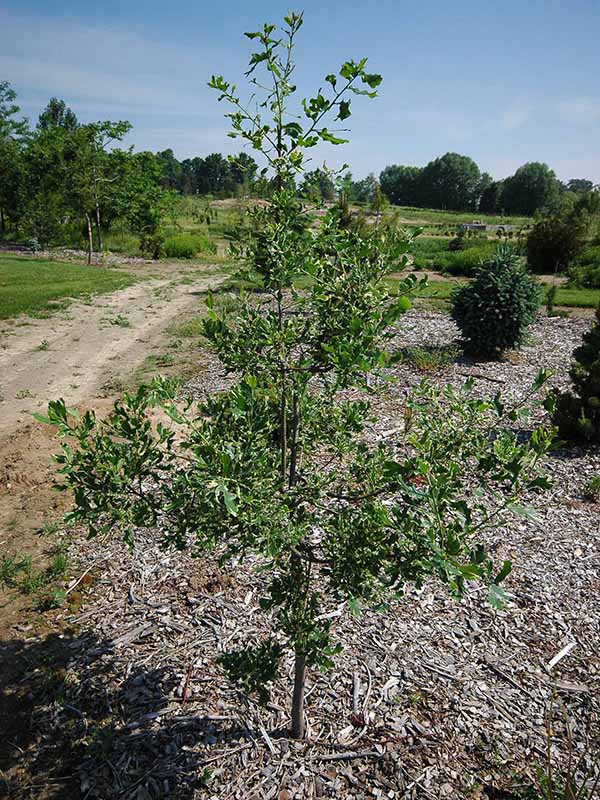
Quercus robur 'Albovariegata'
Quercus robur 'Variegata'.
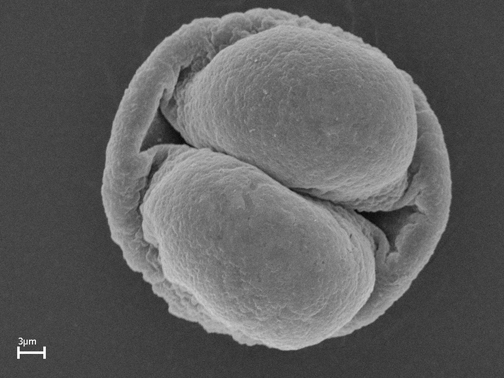
Scanning electron microscope image of pollen grain.